For the penultimate walk in this year’s saltmarsh pilgrimage, as part of our River Dart Way, we were in collaboration with ‘forest bathing’ guide, Clare Coyne, as we journeyed from Ashprington to Totnes. Once again, we were blessed with lovely weather and enjoyed a peaceful ‘wander and wonder’ through woods and meadows along the river, on a sunny autumn afternoon.
Some pilgrims had previously expressed concern about ‘bathing’ in October! So Clare soon reassured us that the bathing in question does not involve getting wet but quietly immersing oneself in the peace and beauty of the natural world. Forest Bathing or Shinrin-yoku is a Japanese practice – ‘the simple and therapeutic act of spending time in a forest’ or other natural environment. I imagine it draws inspiration from centuries of Buddhist practice of embodied mindfulness and Shinto animism, yet articulated as ‘forest bathing’ it has developed in Japan since the 1980s, as a secular method for cultivating mental and physical health. As such it can seem more accessible than traditional spiritual practices to contemporary people. For us wild church pilgrims, who are accustomed to spending quiet time outside, it felt very familiar and offers another beautiful way into nature connection. One of the aspects of forest bathing guidance, in my experience of it in recent years, is that it offers ‘invitations’ to help people settle into their embodied experience and open up to the world around them. Clare enabled this beautifully through some pauses for poetry and reflection as we walked.
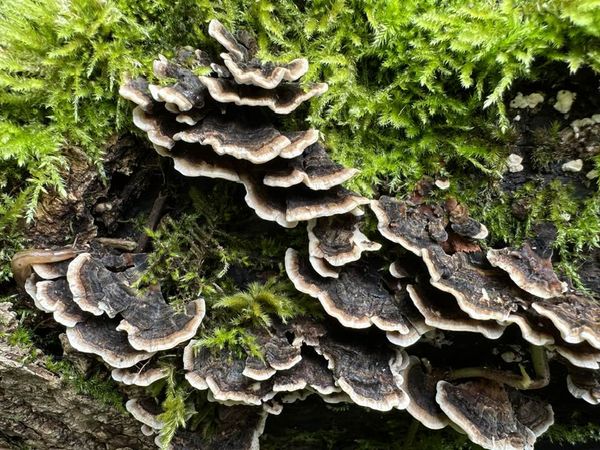
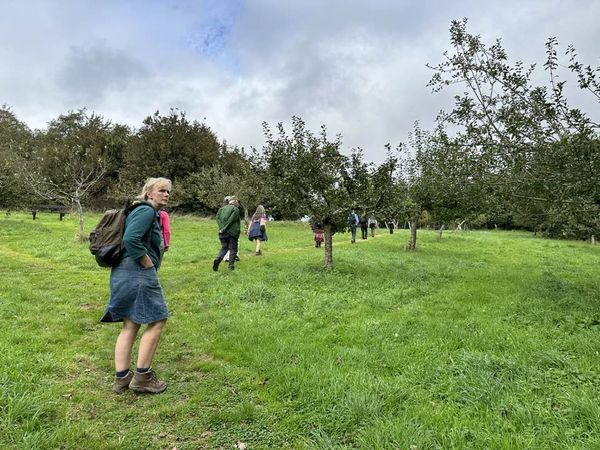
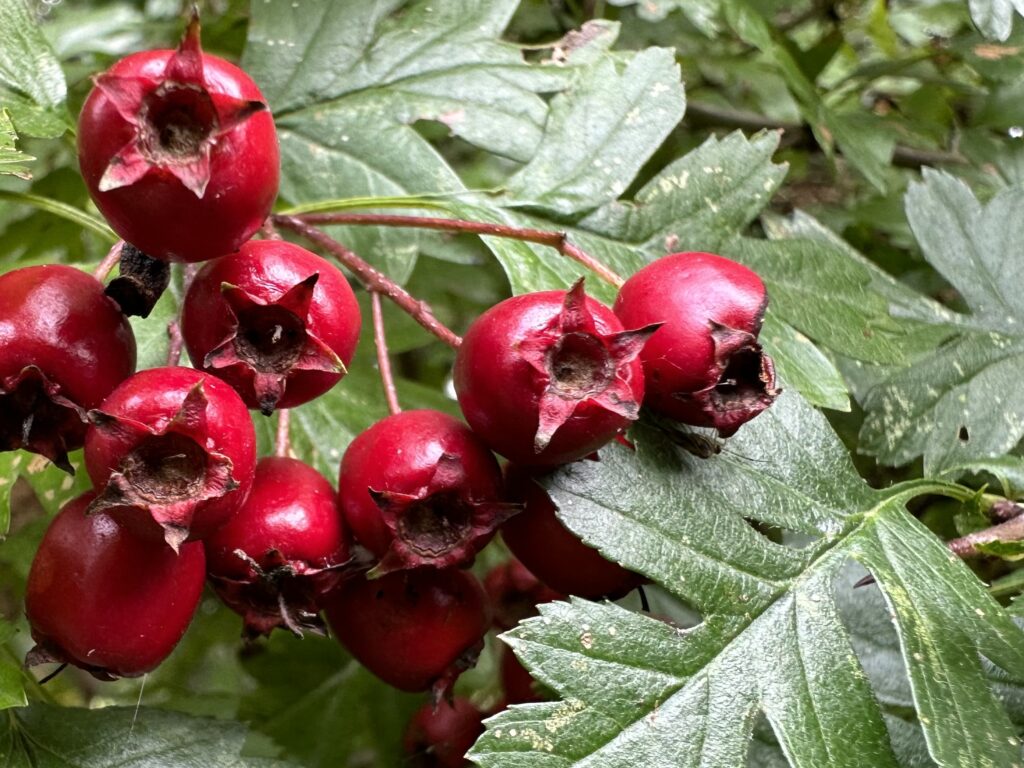
This month we began at last month’s destination and gathered on the perfectly placed benches in the churchyard of St David’s, Ashprington. Since we last met, we have passed through the autumn equinox and the nights are now lengthening as autumn deepens. The shift in the season was very present in the golden leaves of a maple tree, smoke curling from a chimney and the sound of starlings whistling from the church tower, which last month had been thronged with swifts and swallows. After gathering together and settling into silence, we then set off through Ash Meadow, the community orchard, which is bountifully blessed with apples this year. Fruitfulness was a strong theme throughout this walk, with scarlet crab apples, huge bracket fungi, chestnuts, conkers, hips and haws all met along the Way. Several of us also paused to admire the deep, dark hue and rich, earthy smell of the compost in the community composting scheme near the top of the hill. Then as we came up to the entrance to the Sharpham Estate, we had a wide and wonderful view over the River Dart.
Here we paused before a gateway and Clare encouraged us to step consciously into our descent towards the river and be aware of the attractive power of gravity drawing us down into closer relationship with this large body of water, when we ourselves are effectively small bodies of water. She reminded us that: ‘Any river is the summation of the whole valley; to think of it as nothing but water is to ignore the greater part’, in the words of Hal Borland’s classic book ‘This Hill, This Valley’. As we walked downwards, the path also led us through the presence of some magnificent, old beech trees, which are themselves like vertical rivers with the great movement of water they embody from roots to crown. Crossing a stile into a steep meadow, we were blessed with another lovely view, which this time included our first glimpse of the Sharpham saltmarsh and of our ultimate destination on Dartmoor. Here we heard a second and highly evocative quote from Professor Borland:
‘October is the fallen leaf, but it is also the wider horizon more clearly seen’
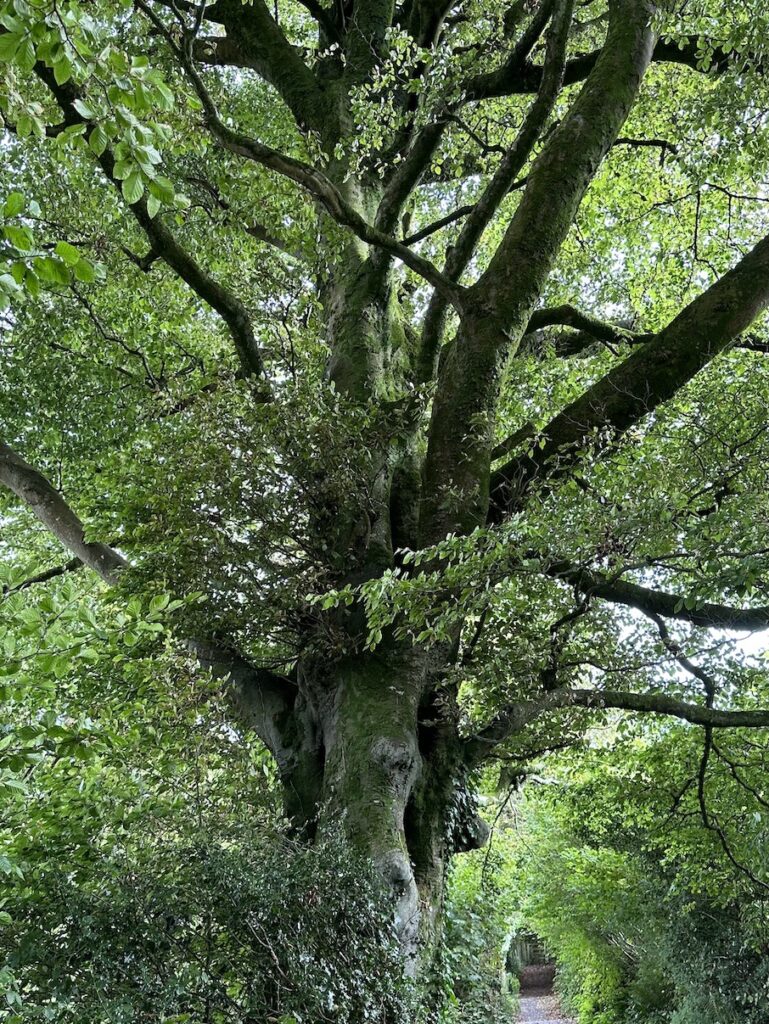
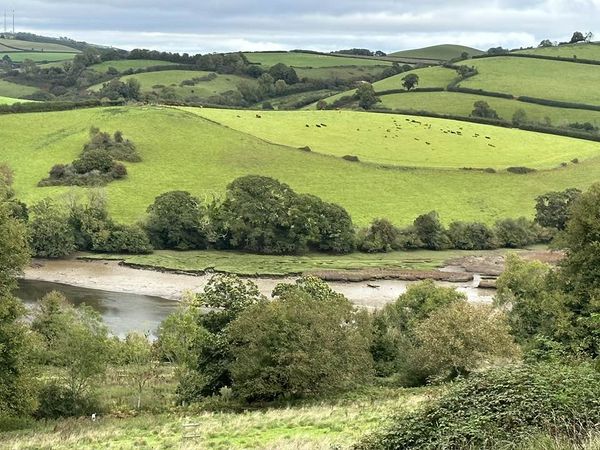
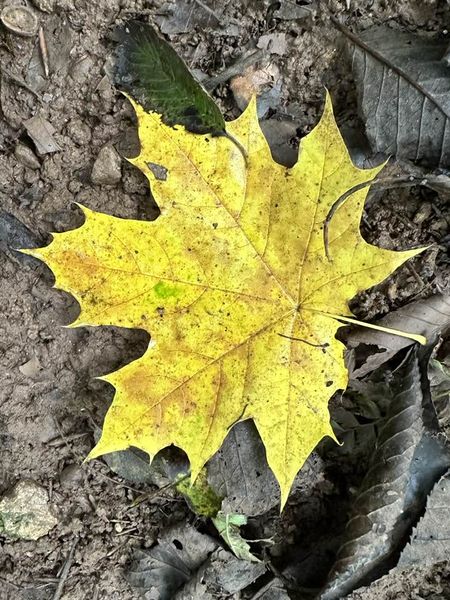
As we rejoined the path, we were now at river-level and soon paused again, this time by the dry rustling whisper of the reed beds, where a little tributary stream was making its way, like us, towards the larger river. It was a perfect point for Clare’s invitation to close our eyes and cup our hands over our ears, before then opening our senses to the sounds and other sensory impressions around us. This invitation was deepened by a poem, Miracle Fair, by the Polish poet Wisława Szymborska, that Clare shared with us here. You can read the full text on the link given and yet it was just the first line and Clare’s invitation to open to miracles in the present moment, which really spoke to me. As I stood listening to and gazing over the reed beds, after everyone else had walked on, there was a sudden, unexpected, miraculous moment, as a white egret quietly lifted out of its invisible fishing ground and flew low over the water and away…
‘Commonplace miracle: that so many commonplace miracles take place’
Soon afterwards we were all astounded by a shared commonplace miracle of a single beech nut apparently hanging mysteriously in mid air! Although actually it was suspended and turning slowly, from a single gossamer thread of spider web. Then we began to climb again, to wander through further meadows and woods that were full of bluebells in the spring but now were full of fallen leaves… then dropped down again to the water by the old quarry. Here we took time for stillness and reflection, inspired by another wonderful writer, Kathleen Jamie. Her prose poem ‘Voice of the Wood’ seemed to perfectly reflect the experience of being in an autumn wood, with the leaves falling and the birds calling by the river. It’s well worth listening to her reading this short piece here in her lovely, lilting Scottish accent.
Then onwards again to reach our final pause place, where an old ash tree cantilevers right over the water. Its horizontal trunk was hung with children, who were playing wild with various howls and growls, which I was enthusiastically told were the calls of jaguars and tamarin monkeys! There was something rather wonderful about this unexpected, commonplace miracle of the meeting of a very quiet wild church and very loud wild children! I felt a real resonance between us in our shared love of the wild and a beauty in our different ways of being wholeheartedly present to that. In this place we were finally close enough to the river to be able to squelch in the mud and seaweed, and to sink our hands down into water and I found that being with children helped me to be childlike, which felt freeing and healing. To paraphrase Christ, this is how we come close to experiencing heaven on earth.
Perhaps this childlike spirit was still present for me when we arrived at our final destination at Leechwell Gardens and I got out the ‘Colour Changing Gin’ for our closing silent communion. I had carried this back from a recent pilgrimage to the Isles of Scilly, having unexpectedly discovered a tiny craft gin distillery on the most southerly UK island of St Agnes. This particular gin is made with a botanical ingredient, butterfly pea flowers, that give a natural bright blue colour to the gin, which reminded me of the beautiful blues of sea and sky that I had enjoyed during my sacred Scilly pilgrimage. By adding a little tonic, and so changing the ph, the colour changes to a lovely lilac. While G&T is not your average communion beverage, we are not your average church (!) and it appealed to me that we could partake of some holy spirits and see some kind of visible, natural transformation really happening in the chalice! As we passed it around the circle, I was also aware that these gardens are close to another tributary of the river, as just above them are the three springs of the Leechwell, known as Toad, Long Crippler and Snake, which are in a sense (like all tributaries) a source of the Dart. From the top of the gardens, there is a fine view over to St Mary’s Church and a triangular pool, which perhaps has been a baptismal or healing pool in centuries past.
So our penultimate pilgrimage drew to a close as we shared reflection on our commonplace miracles and ended with a blessing. Our final walk for this year, and of our saltmarsh pilgrimage, will be on the afternoon of Sunday 5th November. See you soon!
